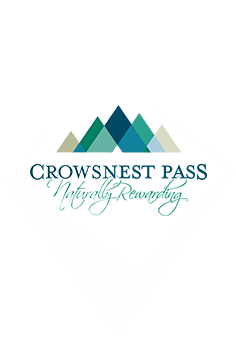Be Prepared
Learn how you and your family can prepare yourselves for an emergency or disaster at https://www.alberta.ca/emergency-preparedness.aspx
Be Prepared Program Web Directory
Disasters can happen with little or no warning. If a disaster happened tomorrow, how long could you and your family survive without assistance?
During a disaster it may take emergency workers sometime to reach you. You should be prepared to take care of yourself and your family for at least 72 hours.
Get the Alberta Emergency Alert
What is the difference between the Alberta Emergency Alert app and the new wireless alert?
Only the most serious alerts will be sent out using the new wireless alerting system. Other alerts that provide information on developing emergencies or serious alerts from other areas will be delivered to you via the Alberta Emergency Alert app, social media and the Alberta Emergency Alert website. The wireless alert message will only contain basic information, and maps and more details will be available from the app and website.
Hazard Preparedness
What to do before, during, and after an emergency
We all have a role to play in emergency and disaster preparedness. By knowing your role, you can prepare for what is within your control. Learn more at https://www.alberta.ca/what-to-do-before-during-and-after-an-emergency.aspx
Wildfires
Wildfire season officially starts March 1 and runs until October 31 each year. Wildfires can affect communities in forested or grassland areas, including urban green spaces like ravines and parks. If a fire is near, protect yourself and loved ones by following directions from authorities and be prepared to evacuate. Learn more at https://www.alberta.ca/wildfires.aspx
Resources for those affected by wildfires - compiled by Alberta Municipalities
Tornadoes and extreme winds
Extreme winds are common in Crowsnest Pass. Learn how to protect yourself and your loved ones at https://www.alberta.ca/tornadoes-and-extreme-winds.aspx
Floods
Floods are a frequent hazard in Canada and have devastated many areas of Alberta. Learn more at https://www.alberta.ca/floods.aspx
Power and water outages
An outage is a short or long-term loss of water or electric power. It can affect a single property, a building or an entire community. Many of Alberta’s hazards, such as high winds, freezing rain and flooding, can damage power lines causing power outages. Water outages can be caused by extreme temperature fluctuations and pipe corrosion causing water main breaks, among other reasons. Learn more at https://www.alberta.ca/power-and-water-outages.aspx
Thunderstorms, lightning, heavy rain, and hail
Thunderstorms, lightning, heavy rain and hail can develop quickly and threaten life and property. Severe storms occur frequently across Alberta and can be unpredictable. Find more at https://www.alberta.ca/thunderstorms-lightning-heavy-rain-and-hail.aspx
Blizzards, freezing rain, ice storms, and extreme cold
Blizzards, ice storms, high winds and blowing snow can develop quickly and threaten life and property. Alberta also experiences extreme cold temperatures during the winter, when temperatures can reach as low as minus 40°C or colder. Temperatures this low are life-threatening and put people and animals at risk. Learn more at https://www.alberta.ca/blizzards-freezing-rain-ice-storms-and-extreme-cold.aspx
Build an Emergency Kit
Unexpected situations happen everyday. Having supplies is one thing you can do to help manage many situations. There are many ways you and your family can become more prepared. You can build emergency kits to help you 'grab and go'. You can make sure you have enough supplies at home in case you have to take shelter for an extended period. In either case, your goal will be to have enough supplies to keep you and your family safe, warm and comfortable.
For a list of items to include in your emergency kit, visit https://www.alberta.ca/build-an-emergency-kit.aspx.
Where to buy an emergency kit: https://www.getprepared.gc.ca/cnt/kts/by-kt-en.aspx
Pet Preparedness
Emergencies and disasters can occur at any time. Being prepared for an emergency, disaster or even unexpected situations can help to keep your pet safe and comfortable when it matters most. Learn more at https://www.alberta.ca/pet-preparedness.aspx
Farm Animals and Livestock Preparedness
Emergencies and disasters such as barn fires, blizzards or floods are common risks in agricultural communities across Alberta. Being prepared will help you protect your farm animals, livestock and property so you can overcome unexpected situations as quickly as possible. Learn more at https://www.alberta.ca/farm-animals-and-livestock-preparedness.aspx
Raise Awareness in your Community
The Get Prepared video series delivers simple steps that anyone can take to become better prepared for an emergency or disaster.
Getting prepared can seem like a large task to take on. It doesn’t happen over night, and breaking it down into simple steps can make it much easier. Take a minute today to learn about what you can do to become better prepared, and share the videos online and within your community.
Learn more at https://www.alberta.ca/raise-awareness-in-your-community.aspx
Make an Emergency Plan
Disasters often cause confusion and distress. A household plan will help you cope with the stress of an emergency or disaster.
Consider that your family may not be together when an emergency occurs and discuss what you would do in different situations.
The Emergency Preparedness guide (PDF, 2.0 MB) has more information about how you can prepare and care for your family during an emergency.
Learn more at https://www.alberta.ca/make-an-emergency-plan.aspx
